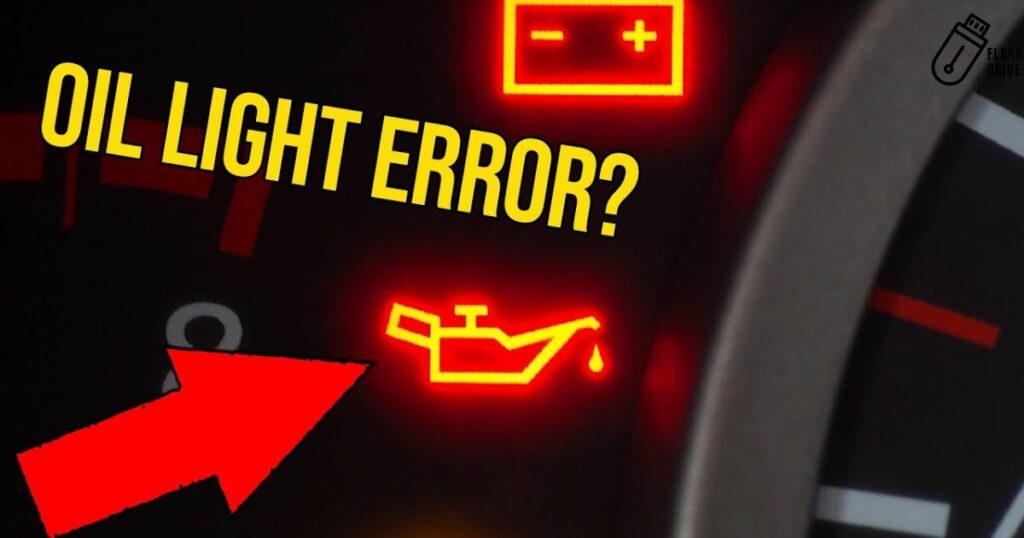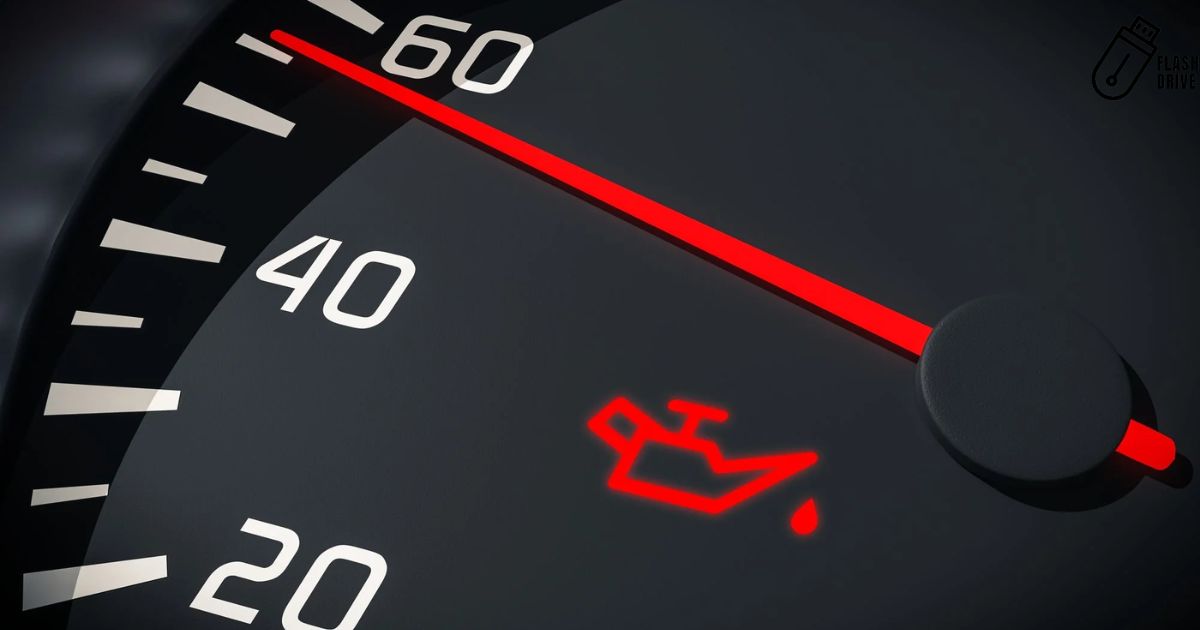Drive with a flash oil light is risky and should be avoided. It signals low oil pressure, which may lead to serious engine damage. Pullover directly and check your oil level. And consult a mechanic before driving again.
Driving with a flash oil light is risky and should be avoided. Curious about driving with a flashing oil light? Ignoring it could lead to serious engine damage. Learn why taking immediate action is crucial for a smooth and safe ride. It is a red flag for potential engine issues. Ignoring it might lead to costly repairs.
Driving with a flashing oil light is risky and should be avoided. The light indicates low oil pressure which may lead to serious engine damage. Pull over safely, and turn off the engine. And seek professional assistance to avoid potential long-term vehicle issues.
Is it Safe to Drive with the Oil Light On?
Driving with a flashing oil light is not safe. The oil light signals low oil pressure which can harm the engine. Continuing to drive in this condition may lead to severe damage causing costly repairs.
If the oil light flashes, it is crucial to pull over immediately turn off the engine, and consult a mechanic for a proper diagnosis. Ignoring the flashing oil light can result in long-term vehicle issues and compromise safety on the road. Always prioritize addressing this warning to ensure a reliable and secure driving experience.
Reasons The Oil Light is On
The oil light may illuminate due to low oil levels or a malfunctioning oil pressure sensor. Low oil levels can result from leaks or excessive engine consumption. A faulty sensor may also trigger the light, indicating a need for inspection and potential repairs by a qualified mechanic.
Changing the oil
Changing the oil is crucial for maintaining a healthy engine. Regular oil changes help remove dirt and contaminants, ensuring smooth engine performance. Follow your vehicle builder’s guidelines and schedule routine oil changes to prolong the life of your engine and improve fuel efficiency.
Low Oil Pressure
Low oil pressure is a concern for your vehicle’s health. It may lead to engine damage and affect performance. Regularly check your oil levels and address any low-pressure issues promptly to keep your engine running smoothly. Consult a mechanic for professional advice if needed.
The Oil Sensor is faulty
A faulty oil sensor can cause inaccurate readings about the oil level in your car. This may lead to potential engine problems if not addressed. It is crucial to have the sensor checked and replaced by a qualified mechanic to ensure proper functioning and avoid any damage to your vehicle.
Oil Circuit
The oil circuit is a crucial part of a vehicle’s engine system responsible for lubricating and cooling engine components. It ensures proper functioning and prevents friction-related damage. If you drive with a flashing oil light it signals low oil pressure, indicating potential harm to the oil circuit and immediate action is necessary to prevent engine damage.
Can I Handle An Oil Light Flashing Alone?

Handling a flashing oil light alone requires caution and swift action. If you are driving and notice the oil light flashing, it is crucial not to ignore it. Pull over safely, turn off the engine, and assess the situation.
Driving with a flash oil light can lead to severe engine damage seeking professional assistance is essential. Attempting to address the issue alone may not be advisable, as it could worsen without proper expertise.
Trusting qualified mechanics to inspect and resolve the problem ensures the health of your vehicle and avoids potential long-term damage. Remember, safety comes first when dealing with a flashing oil light during your drive.
Engine Oil Pump Isn’t Working
If your engine oil pump is not working it can lead to serious problems for your vehicle. The oil pump plays a crucial role in circulating oil throughout the engine, ensuring proper lubrication.
When it fails, the engine lacks essential lubrication, causing increased friction and potential damage. This can trigger the oil light on your dashboard to flash indicating a critical issue. Ignoring this warning and continuing to drive with a flashing oil light is risky as it may result in severe engine damage. A malfunctioning oil pump requires immediate attention to prevent further complications.
It is crucial to have your vehicle inspected by a qualified mechanic to diagnose and address the problem promptly. Driving without addressing this issue can lead to costly repairs and even engine failure. Always prioritize addressing engine oil pump issues to ensure the longevity and performance of your vehicle.
Don’t Drive Your Vehicle With Low Oil Pressure
| Risk/Consequence | Description |
| Engine Damage | Driving with low oil pressure can lead to inadequate lubrication, causing increased friction and potential damage to engine components. |
| Overheating | Insufficient oil circulation can result in overheating, as oil plays a crucial role in cooling the engine by carrying away heat from various components. |
| Increased Wear and Tear | Lack of proper lubrication can accelerate wear and tear on crucial engine parts, such as bearings, pistons, and camshafts, reducing their lifespan. |
| Risk of Engine Seizure | Continuous operation with low oil pressure may lead to engine seizure, a catastrophic failure where moving parts become stuck, causing irreparable damage. |
| Reduced Performance | Low oil pressure can affect the overall performance of the vehicle, leading to decreased power, efficiency, and responsiveness. |
| Catalytic Converter Damage | In some cases, low oil pressure can result in increased exhaust temperatures, potentially damaging the catalytic converter and emission control systems. |
| Increased Fuel Consumption | Poor lubrication can lead to increased friction, requiring more energy to overcome resistance, which may result in higher fuel consumption. |
| Complete Engine Failure | Ignoring low oil pressure warnings may ultimately lead to complete engine failure, necessitating costly repairs or even engine replacement. |
| Towing Costs | If the vehicle breaks down due to low oil pressure, towing expenses may be incurred, adding to the overall financial burden of repairs. |
| Safety Concerns | Engine failures on the road can pose safety risks, especially if they occur in traffic or at high speeds. It is crucial to prioritize safety and address oil pressure issues promptly. |
Assessing the Severity of the Issue
When your car oil light starts flashing it is crucial to assess how serious the issue might be. First, check your oil levels using the dipstick low levels could indicate a leak or consumption. Pay attention to the engine’s sound and any unusual noises.
If the light flickers momentarily, it might be a sensor glitch, but consistent flashing demands attention. Look for visible oil leaks beneath your vehicle. If there’s smoke or a burning smell it could signal a more severe problem. Considering these factors will help you determine if it is safe to drive or if immediate professional assistance is needed to prevent potential engine damage.
Risks of Driving with a Flashing Oil Light
- Engine Damage: Ignoring a flashing oil light may lead to inadequate lubrication, causing friction and potential damage to crucial engine components.
- Overheating: Inadequate oil circulation can result in engine overheating, impacting its overall performance.
- Increased Wear and Tear: Insufficient lubrication accelerates wear on essential parts like bearings and camshafts, reducing their lifespan.
- Risk of Engine Seizure: Continuous operation with low oil pressure may result in engine seizure, a serious and costly failure.
- Reduced Performance: Driving with low oil pressure can diminish the vehicle’s power, efficiency, and responsiveness.
- Catalytic Converter Damage: Elevated exhaust temperatures due to low oil pressure may harm the catalytic converter and emission control systems.
- Higher Fuel Consumption: Poor lubrication increases friction, leading to greater energy consumption and higher fuel costs.
- Complete Engine Failure: Ignoring the flashing oil light can eventually lead to complete engine failure, requiring significant repairs or replacement.
- Towing Costs: Breakdowns due to low oil pressure may necessitate towing, adding to the financial burden.
- Safety Concerns: Engine failures on the road pose safety risks, emphasizing the importance of promptly addressing oil pressure issues.
Seeking Professional Help
When faced with a flashing oil light it is crucial to prioritize safety and consider seeking professional help. Ignoring the warning may lead to severe engine damage, making expert assistance essential. A skilled mechanic can quickly diagnose the issue, preventing potential long-term problems associated with driving with a flashing oil light.
Professional help ensures a thorough inspection of your vehicle, identifying any leaks or malfunctions causing the warning light. Trusting experts when your oil light is flashing helps avoid costly repairs and extends the overall lifespan of your engine. Mechanics have the expertise to assess the severity of the issue and recommend appropriate solutions, preventing further damage.
Promptly seeking professional help safeguards your vehicle’s performance and prevents potential safety hazards on the road. Certified technicians can efficiently address the root cause of the flashing oil light, restoring your vehicle’s optimal functionality.
Do not hesitate to consult a professional to ensure your vehicle is in top condition and safe to drive without risking long-term damage. Ultimately, entrusting the resolution of a flashing oil light to professionals is a wise decision to maintain both your vehicle’s health and your peace of mind.
FAQ’s
Can I continue to drive with a flashing oil light?
It is strongly advised not to drive with a flashing oil light. Ignoring this warning can lead to severe.
What should I do if my oil light is flashing while driving?
If your oil light starts flashing, it is essential to pull over safely, turn off the engine, and seek professional assistance. Continuing to drive may result in increased risks.
Are there risks associated with driving with a flashing oil light?
Yes, driving with a flashing oil light poses significant risks, including potential engine damage, overheating, and reduced performance. It is recommended to address the issue promptly to avoid further complications.
Conclusion
it is unsafe to drive with a flashing oil light. Ignoring this warning may lead to significant engine damage and costly repairs. Always prioritize safety by addressing the issue immediately. Pull over, turn off the engine, and seek professional assistance. Swift action can prevent long-term damage and ensure a safer driving experience.
Don not underestimate the importance of responding promptly to a flashing oil light. Your vehicle’s well-being and your safety depend on it. Remember, proactive maintenance is key for a smooth and trouble-free driving journey. proactive approach to addressing warning signals ensures a safer and smoother driving experience in the long run. It is crucial to prioritize safety and vehicle maintenance by addressing the flashing oil light promptly.











